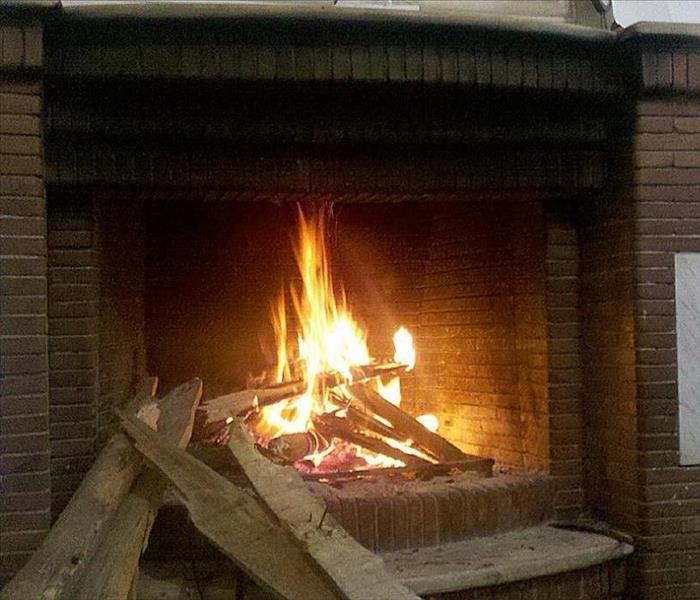7 Chimney Safety Tips
11/30/2020 (Permalink)
As the days get shorter and the temperature drops, you may start thinking about cozying up to the glow of a crackling fire in your home. But the jolly moments the holiday season can bring can quickly be spoiled if you suspect a problem with your fireplace and begin to worry. Here are seven chimney and fireplace safety tips provided by insurance providers to proactively address potential problems.
- Get it inspected.
The Chimney Safety Institute of America recommends that chimneys, fireplaces and vents be inspected annually and cleaned or repaired, if necessary. In addition to cleaning, a professional chimney sweep should be able to check your chimney for cracks or loose bricks.
- Keep it clear – inside and out.
Inside, keep papers, decorations, curtains and other flammable objects away from the fireplace. Outside, hire a professional to trim any trees that are overhanging your house or too close to your chimney. It’s best to have tree limbs as far from your chimney as possible.
- Install a chimney cap.
Think of it as a hat for your chimney. It helps to keep out extra moisture from rain and snow. It will also help to keep out animals that may be looking for a place to build their new home.
- Use a screen or doors.
It’s important to be protected from flying sparks and embers — even if the fire will be monitored by someone the entire time. Whenever you’re using your fireplace, be sure to close the glass doors or draw the wire screen mesh curtains closed.
- Keep it clean.
Excess ash in the fireplace can reduce airflow to logs, which creates more smoke. Always use caution when disposing of ashes as they can remain hot for extended periods after a fire appears to be out. Just to be on the safe side, think of all ashes as hot coals.
- Use caution with ashes.
When you dispose of your ashes, use a covered metal container and wet them down. Don’t add anything combustible to the ash bucket or store it near anything combustible. Allow it to sit outside, for at least three days before disposing of them. Make sure it’s somewhere where it can’t be knocked over by winds or animals, and away from combustible materials and buildings.
- Start smart.
Be certain to keep your fireplace damper open when starting a fire. This will help prevent smoke from backing up into your home or lingering in your fireplace. A properly opened chimney flue will minimize creosote buildup and help prevent internal chimney fires.
While these chimney and fireplace safety tips should help to reduce the chance of an accident, this is not a comprehensive safety guide. SERVPRO of West Knoxville wants our community and customers to be prepared. Click here to read about a recent fire in Knoxville that was caused by the chimney, luckily no life was lost and the home didn’t suffer extensive damage. Always observe safety precautions when using your fireplace and be aware of any changes in the way your fireplace operates – it could be a warning sign.





 24/7 Emergency Service
24/7 Emergency Service
